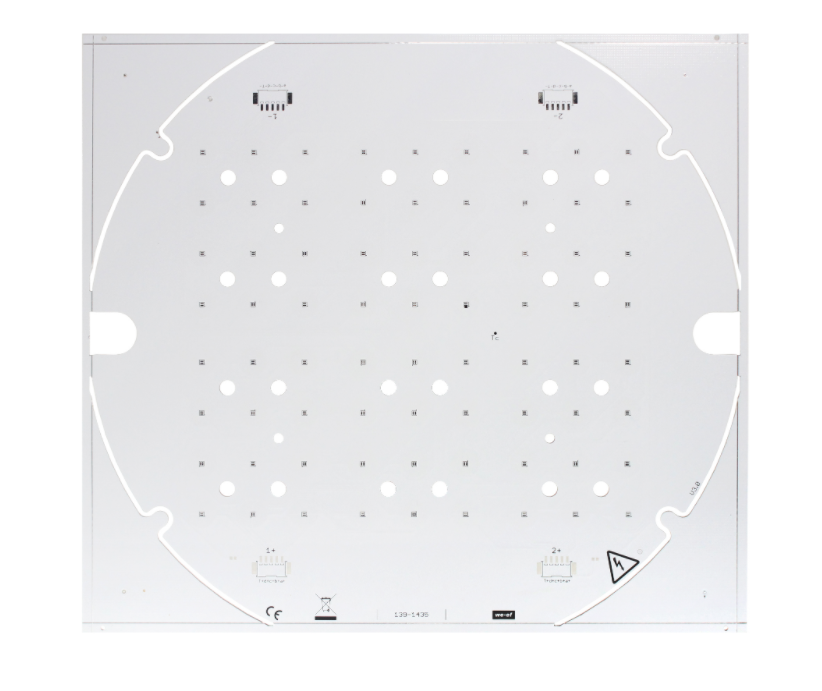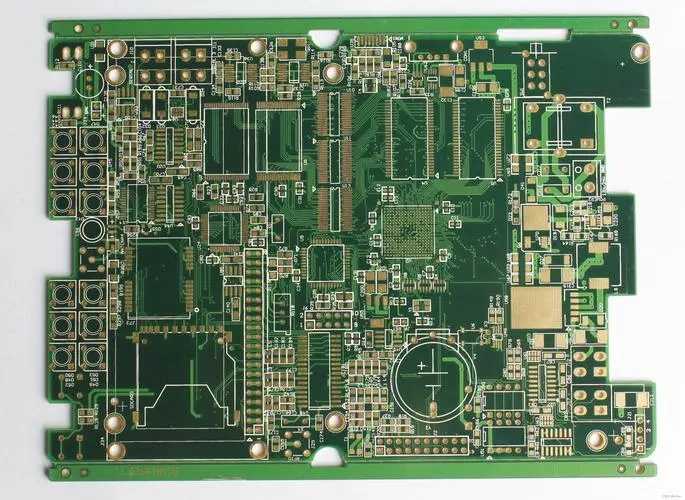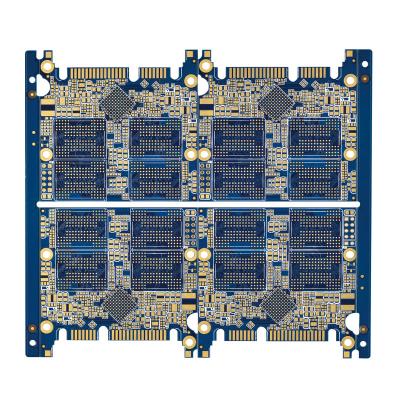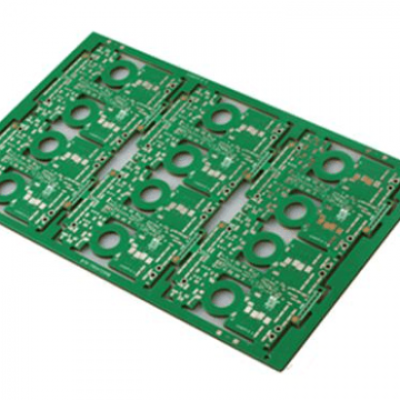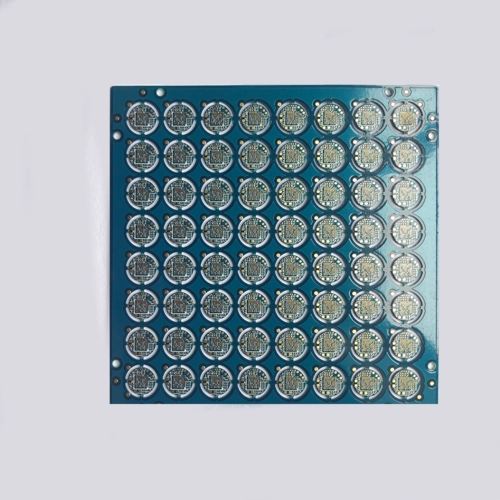Complete Introduction of Aluminum PCB
What is Aluminum PCB?
An aluminum PCB has a similar layout to any other PCB. It has a layer or layers of copper, solder mask and silkscreen layered over it. Instead of having a fiberglass or plastic substrate, though, an aluminum circuit board has a metal substrate. This base mainly contains a combination of aluminum. The metal core can consist entirely of metal or have a combination of fiberglass and aluminum. Aluminum PCBs typically are single sided, but can be double sided as well. Mulilayer Aluminum PCBs are highly difficult to manufacture.
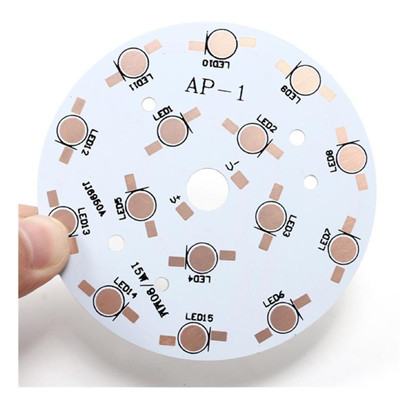
Aluminum Substrate
Aluminum boards get the most use in LED and power converting electronics. The intense light produced by LEDs creates high levels of heat, which aluminum directs away from components. An aluminum PCB extends the lifespan of an LED device and provides more stability. You can find aluminum substrates in street lights, stop lights and household lighting. They allow power converters to change currents and regulate electronics. Creators in many other industries also find use in aluminum circuit boards, but they don't implement them as often.
Why is Aluminium Used in Circuit Boards?
Aluminum can actually transfer heat away from vital components, thus minimizing the harmful effect it could have on the circuit board. Higher durability: Aluminum provides strength and durability to a product that ceramic or fiberglass bases cannot.
Advantages and Disadvantages of Aluminum PCB
Aluminum boards are one of the most thermally conductive PCB options. They keep as much heat away from vital components as possible to ensure minimal circuit damage. Thanks to their high heat tolerance, they can handle higher density circuits and larger power levels. Substrates created from aluminum alloys have a high level of physical durability that lowers the risk of breakage. Compared to other metals, aluminum has a lower environmental impact in addition to a reasonable cost.
On the other hand, aluminum PCBs tend to have more niche uses than standard boards. While they cost less than adding conductors to a copper board, they have a higher price than standard PCBs without those components. Investing in an aluminum core may not pay off if your application doesn’t involve high temperatures. If you plan on creating a flex circuit, an aluminum flex PCB can only flex into its initial position. It will bend to fit into smaller electronics, but it won’t withstand the stress of vibration.

Advantages | Disadvantages |
| Low Cost: Aluminum is a metal that can be found in a variety of climates, so it is easy to mine and refine. Therefore, the costs of doing so are significantly lower than other metals. In turn, this means that manufacturing products with these metals are less expensive as well. | High cost. |
| Environmentally Friendly: Aluminum is non-toxic and recyclable. Manufacturing with aluminum is also conducive to conserving energy due to its ease of assembly. For printed circuit board suppliers, using this metal helps maintain the health of our planet. | The current mainstream can only do single aluminum PCB, it is difficult to do double sided aluminum PCB. |
| Heat Dissipation: High temperatures can cause severe damage to electronics, so it is wise to use a material that can help dissipate heat. Aluminum can actually transfer heat away from vital components, thus minimizing the harmful effect it could have on the circuit board. | The product will be more easily to have matter in electrical strength and pressure. |
| Higher Durability: Aluminum provides strength and durability to a product that ceramic or fiberglass bases cannot. Aluminum is a sturdy base material that can reduce accidental breakage during manufacturing, handling, and everyday use. | Aluminum is susceptible to more rapid attacks by halide ions, of which chloride (CL -) is the most frequently encountered. |
| Lightweight: For its incredible durability, aluminum is a surprisingly lightweight metal. Aluminum adds strength and resilience without adding on any additional weight. |
Performance of Aluminum PCB
1. Thermal Dissipation
Common PCB substrates, such as FR4, CEM3 are poor conductors of thermal. If the heat of electronic equipments cannot be distributed in time, it will result in high temperature failure of electronic components. Aluminum substrates can solve this thermal dissipation problem.
2. Thermal Expansion
Aluminum substrate PCB can effectively solve the thermal dissipation problem, so that the thermal expansion and contraction problem of components on printed circuit boards with different substances can be alleviated, which improves the durability and reliability of whole machine and electronic equipments. In particular, aluminum substrate can solve the SMT (surface mount technology) thermal expansion and contraction problems.
3. Dimensional Stability
Aluminum substrate printed circuit board has apparently higher stability than the insulating material of the printed circuit board. When heated from 30 ° C to 140 ~ 150 ° C, the dimensional change of aluminum substrate is only 2.5 ~ 3.0%.
rpttechpcb is Professional production low-cost PCB,Cheap PCB, Low price for PCB,94V0
4. Other Performance
Aluminum substrate printed circuit board has shielding effect, and can alternative brittle ceramic substrate. Aluminum substrate also helps to improve the heat resistance and physical properties and reduce production costs and labor.
Structure of Aluminum PCB
Aluminum PCBs are aluminum based CCLs (CCL is a type of base material of PCBs). AluminumPCBs are actually quite similar to FR4 PCBs. The basic structure of Aluminum PCBs is four layered. It consists of a layer of copper foil, a dielectric layer, an aluminum base layer and aluminum base membrane.
Copper Foil Layer: the copper layer used is relatively thicker than normal CCLs ( 1oz-10oz). A thicker layer of copper means a larger current carrying capacity.
Dielectric Layer: the Dielectric layer is a thermally conductive layer and is around 50μm to 200μm thick. It had a low thermal resistance and it suitable for its application.
Aluminum Base: The third layer isthe aluminum base which is made up of aluminum substrate. It has a high thermal conductivity.
Aluminum Base Membrane Layer: Aluminum base membrane is selective. It has a protective role by keeping the aluminum surface safe from scraping and unwanted etching. It is of two types i.e. Lower than 120 degree or around 250 degrees (anti high temperature).

 Meizhou Ruiputuo Technology Co.,Ltd
Meizhou Ruiputuo Technology Co.,Ltd 
